Microeconomics for MBAs 2
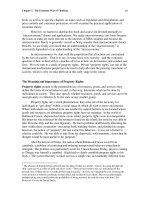
Microeconomics for MBAs 2
... more than 2 papayas for a coconut; Harry would be better off if he could give up fewer than 4 papayas for a coconut. If, for example, they agree to trade at the exchange rate of 1 coconut for 3 papayas, ... enforcer, such as the police and courts, and (2) the specification of rights in a legally binding “social contract,” meaning that a third-party enforcer is established. Most of w...
Ngày tải lên: 29/10/2013, 01:15

Microeconomics for MBAs 46
... Economics, vol.14 (1985), pp. 399- 422 . 20 Hall’s study is discussed by the Jensen article cited in footnote 3. Chapter 13 Imperfect Competition and Firm Strategy 27 controlling interest in conglomerates ... question, 62 hostile takeover attempts (50 of which were successful) from 1984-1986 were examined. 22 According to this study, layoffs were common, but seldom exceeded 10 percent of...
Ngày tải lên: 18/10/2013, 00:15

Microeconomics for MBAs 47
... ). Given the market demand curve, the firm could sell an output of Q 2 for only P 2 , earning total revenues of P 2 times Q 2 . Since the average cost of producing at that output level -- AC 1 ... but at a slower rate. In Table 14 .2, the marginal cost of producing each additional megawatt, shown in column 2, decreases from $50 for the first megawatt to $10 for the fifth. Thoug...
Ngày tải lên: 20/10/2013, 20:15
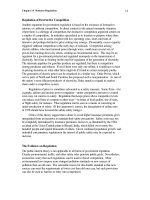
Microeconomics for MBAs 48
... explained as an indirect form of taxation—in the sense that taxation is the government’s means of extracting money to pay for what are viewed as public goods and services. For example, until 1978, ... well into the 21 st century. The future development of AT&T should provide some interesting examples of the effects of regulation and deregulation. Chapter 14 Business Regulation 22 MA...
Ngày tải lên: 20/10/2013, 20:15
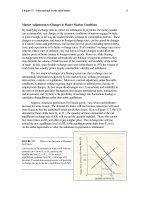
Microeconomics for MBAs 60
... process for prices in general. As U.S. demand for foreign goods rises, the demand curve for francs shifts outward from D 1 to D 2 , shifting the equilibrium from E 1 to E 2 . As foreign demand for ... more foreign imports, both directly and in the form of domestic goods that incorporate foreign parts or materials. Either way, an increase in real incomes leads to an increase in the...
Ngày tải lên: 24/10/2013, 18:15
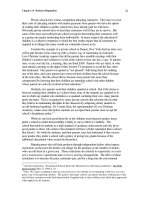
Microeconomics for MBAs 49
... that people are getting more for the extra $20 than the shampoo. They are getting a place to stay that screens out those who aren’t willing or able to pay an extra $20 for a small bottle of shampoo. ... abusive customers can make work a form of “hell” for the workers. If forced to take excessive abuse, the workers would, no doubt, demand higher wages to compensate them for this abuse....
Ngày tải lên: 24/10/2013, 18:15
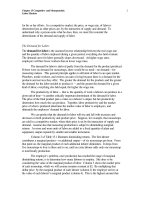
Microeconomics for MBAs 50
... (2) Price of Mousetraps in Product Market (3) Value of Each Laborer to Employer (Value of the Marginal Product) [ (2) x (3)] (4) First laborer 6 $2 $ 12 Second laborer 5 2 10 Third laborer 4 2 ... Second laborer 5 2 10 Third laborer 4 2 8 Fourth laborer 3 2 6 Fifth laborer 2 2 4 Sixth laborer 1 2 2 If the wage rate is slightly below $ 12 an hour, the employer will hire only o...
Ngày tải lên: 24/10/2013, 18:15

Microeconomics for MBAs 1
... determine what they 1 R.A. Radford, “The Economic Organization of a POW Camp,” Economica (November 1945), pp. 180- 20 1. F Chapter 1. The Economic Way of Thinking 2 are willing to buy and sell ... offered in different bungalows. A priest, for example, found that he could exchange a pack of cigarettes for a pound of cheese in one bungalow, trade the cheese for a pack and a half of cig...
Ngày tải lên: 29/10/2013, 01:15
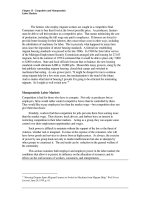
Microeconomics for MBAs 51
... Each Worker (2) Total Wage Bill [(1) times (2) ] (3) Marginal Cost of Additional Worker [Change in (3)] (4) 1 2 3 4 5 6 $20 ,000 22 ,000 24 ,000 26 ,000 28 ,000 30,000 $ 20 ,000 44,000 72, 000 104,000 ... to $22 ,000. The cost of the second worker is therefore $24 ,000 (column 4): $22 ,000 for his services plus the $2, 000 raise that must be given to the first worker. TABLE 15 .2 Ma...
Ngày tải lên: 29/10/2013, 01:15
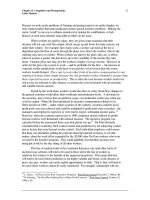
Microeconomics for MBAs 52
... Competitive and Monopsonistic Labor Markets 25 worker with $487.50 for the week, or a 2. 5 percent reduction in pay for a 25 percent reduction in effort. The lesson of this discussion is not that ... H. Pencavel, “Work Effort, On the Job Screening, and Alternative Methods of Remuneration,” Research in Labor Economics (Greenwich, Conn.: JAI Press, 1977), pp. 22 5 -25 9. 20 Eric Seiler...
Ngày tải lên: 29/10/2013, 01:15